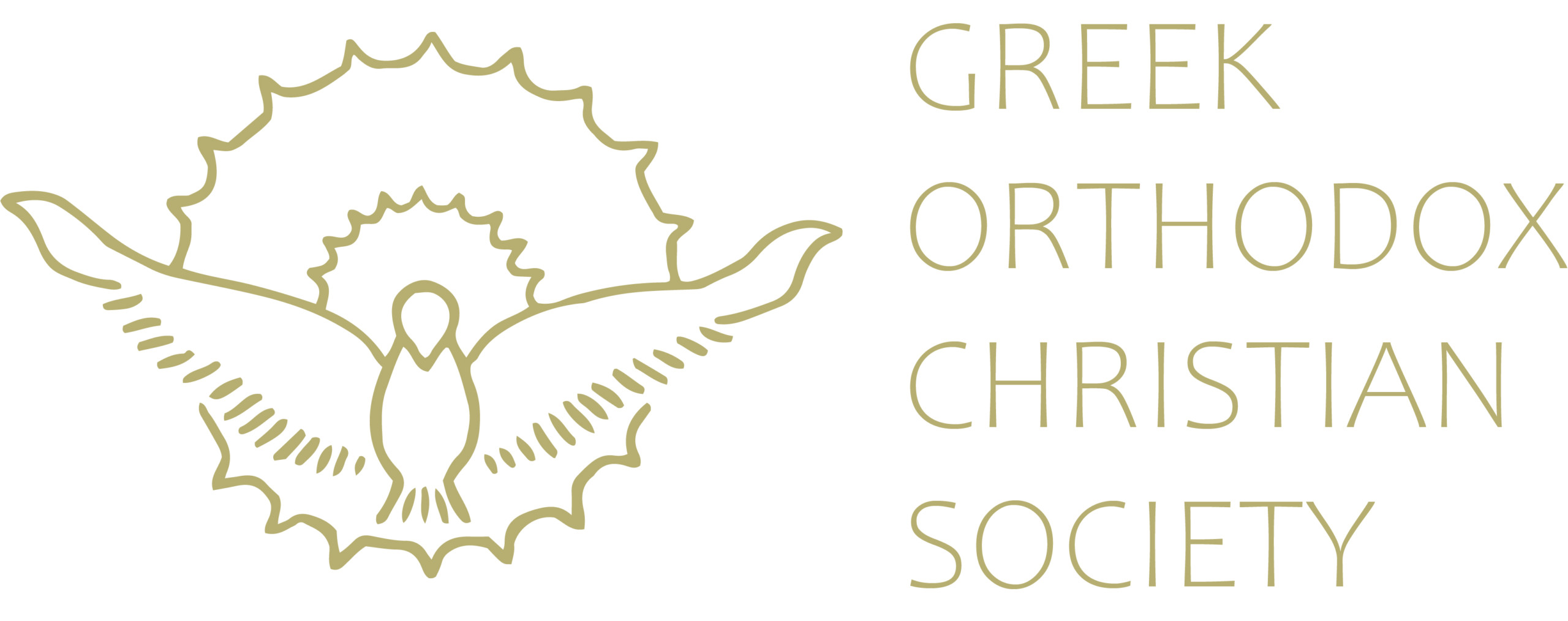Hymn to the Theotokos
Την Ωραιότητα της Παρθενίας Σου Θεοτοκίον Ἦχος γ’ Τὴν ὡραιότητα τῆς παρθενίας σου, καὶ τὸ ὑπέρλαμπρον τὸ τῆς ἁγνείας σου, ὁ Γαβριὴλ καταπλαγείς ἐβόα σοι Θεοτόκε, Ποῖόν σοι ἐγκώμιον προσαγάγω ἐπάξιον; τί δὲ ὀνομάσω σε; ἀπορῶ καὶ ἐξίσταμαι· διὸ ὡς προσετάγην βοῶ σοι, Χαῖρε ἡ Κεχαριτωμένη.
Awed by the beauty of your virginity and by the brilliance of your purity, Gabriel cried aloud to you, O Mother of God, “How can I praise you as I should? With what name shall I call you? I am at a loss and amazed; therefore as I was commanded, I cry to you: Rejoice, full of grace!”
Many hymns referring to the Theotokos were written in the 8th and 9th centuries as hymnographers, many of them monks, began to enrich the hymnology of the Church. This popular hymn, based on the events of the Annunciation, is found in the book known as the Paraklitiki, and is used throughout the Church year. It was a common theme running through the writings and hymnology of the Church Fathers that the Theotokos was pure in both body and soul when she entered the Temple, and that she was there prepared to become the vessel and Mother of Light.
George of Nicomedia characteristically states in his Homily on the Entrance of the Theotokos into the Temple that the Virgin Mary was “clean of all human manner and passion, not being subject to these and above the need of nature”. He goes on to focus on her purity of mind, rhetorically asking: “Which mind, motivated so much to achieve perfect dispassion, is more pure compared to the one which she, the spotless one, exhibited from childhood?” Like the Angel, he cannot fail but address the Theotokos using similar language to the hymn, “Oh! The most beautiful adornment of the beautiful!” («Ὥ τῶν ὡραίων ὡραιότατον ὡράϊσμα!»). Following the example of the Angel, we and the hymnographers can only express our joy.
Archbishop Theophylact of Bulgaria, in his commentary on the Gospel reading of the Annunciation, says that the angel cries out with the greeting, “Rejoice, full of Grace!”, to indicate with the word, ‘rejoice’, that Eve’s sadness, when God told her that, “in pain you shall bring forth children”, is now dissolved and with the words, ‘full of Grace’, which means, blessed, replaces the curse of Eve after the fall, “I will greatly multiply your sorrow…”. Indeed, according to St Nicholas Kabasilas, the Virgin Mary herself rejoices on the Good News received from the Angel: “the greatest reason for which the Virgin Mary rejoices is not simply because through her, God, but also she herself, due to those things she knew and foresaw, brought resurrection to mankind.”
Source: Lychnos August/September 2018
